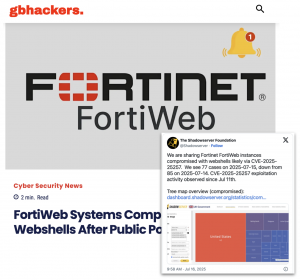New CrushFTP Critical Vulnerability Exploited in the Wild
At least 10,000 CrushFTP instances are vulnerable to a critical flaw, which is currently being exploited by attackers, affecting the file transfer solution, according to cybersecurity experts. The vulnerability, tracked as CVE-2025-54309, involves a mishandling of AS2 validation in all versions of CrushFTP servers prior to 10.8.5 and prior to 11.3.4_23. It can be exploited when the demilitarized zone (DMZ) proxy feature is not used. On July 21, the Shadowserver Foundation reported observing 1040 unpatched CrushFTP instances, with the top affected countries being the US, Germany and Canada.











